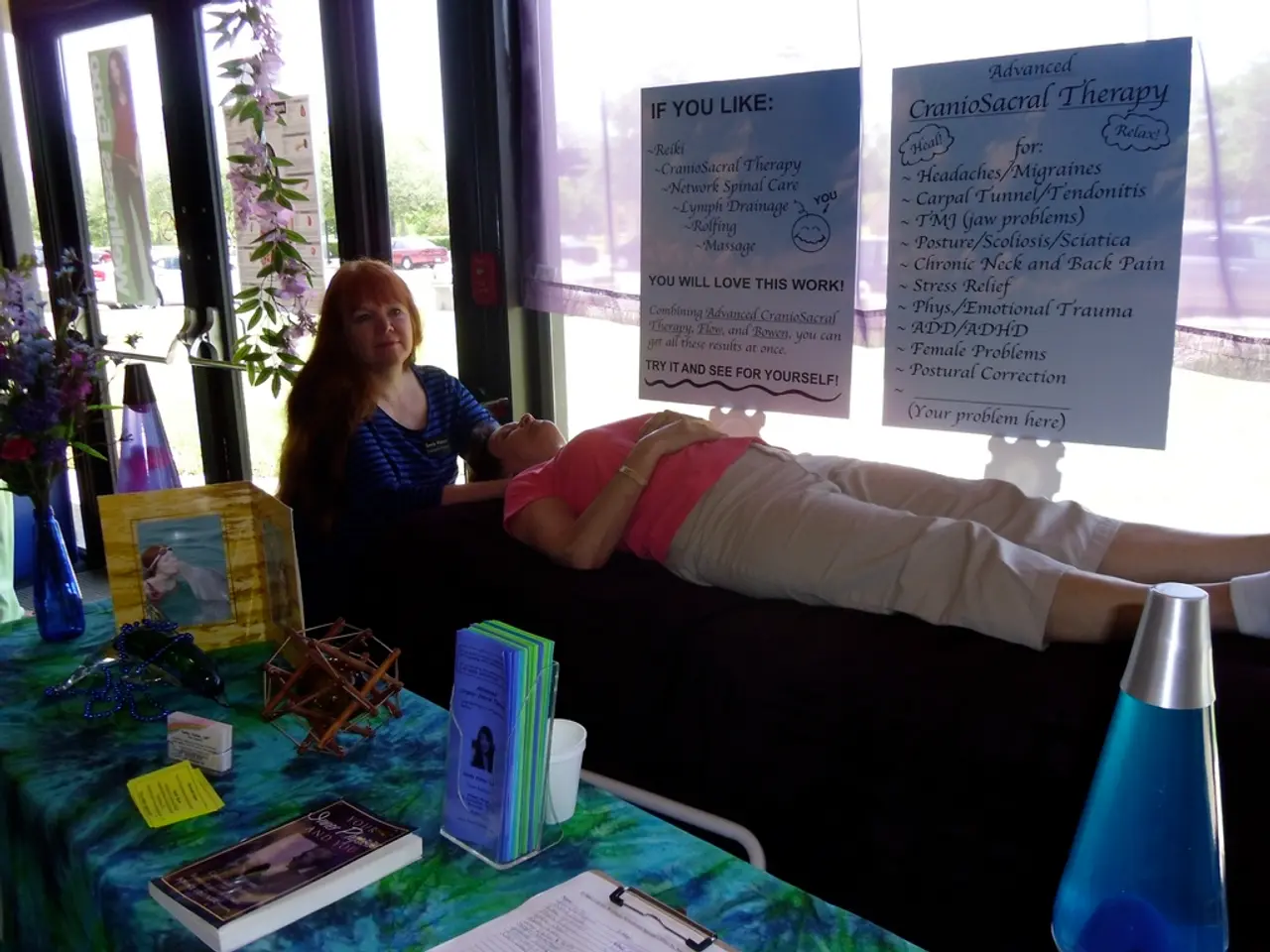Assistance in Suicide Prevention: Mobile App Tackles Risk for Vulnerable Individuals
A groundbreaking digital therapeutic app called OTX-202, developed by Ohio State University Wexner Medical Center and Yale School of Medicine, has shown promising results in reducing suicide rates among high-risk individuals.
The app was tested in a randomized clinical trial involving 339 psychiatric patients across six U.S. hospitals from April 2022 to April 2024. All participants were recently discharged after treatment for elevated suicide risk.
The trial, published in the JAMA Network Open journal, aimed to address the challenge of finding therapists for suicide-specific therapy after hospital discharge. Participants were randomized into two groups: one using OTX-202, a mobile app delivering 12 CBT-based (cognitive-behavioral therapy) lessons designed specifically for suicide prevention, and the other using a control app offering basic safety planning and suicidal education but no CBT components.
Key aspects of the trial design included the use of 12 interactive sessions, each lasting about 10-15 minutes, addressing crisis planning, emotion regulation, and cognitive reappraisal. The first session was completed before discharge, with ongoing use at the participant’s own pace post-discharge, a period identified as especially high risk for suicide attempts.
Evaluation of clinical improvement used the CGI (Clinical Global Impression) scale alongside tracking of suicidal thoughts and behaviors over a six-month follow-up.
The findings of the trial were significant. The app reduced repeat suicide attempts by approximately 58% among patients who had previously attempted suicide. About 98% of OTX-202 users showed clinical improvement in suicidal thoughts and behaviors, compared to 88% of the control group. Users of OTX-202 experienced a sustained reduction in suicidal ideation for nearly six months, while the control group saw suicidal thoughts rebound within six months.
The overall one-year probability of suicide attempt was not significantly different between groups, but notable benefit occurred particularly in patients with prior suicide attempts. There were no suicide deaths in the OTX-202 group during the study, while one occurred in the control group.
Researchers highlighted the app’s potential role in bridging the gap where suicide-specific therapies are scarce, especially after hospital discharge. They noted, however, that further studies with larger sample sizes and longer-term follow-up are needed to fully validate its efficacy and broad applicability.
The app OTX-2022 is designed to help patients living with serious health issues, including logging sugar intake, mental health support, rehabilitation exercises, and post-operative pain management. It offers a convenient solution for delivering medical help, especially in the pandemic era. The period after hospital discharge following a suicide attempt is the most risky and requires vigilant intervention and care. OTX-2022 aims to fill this gap by offering proper guidance and necessary help to at-risk people.
Suicide rates in the US have been increasing for over two decades and are among the leading causes of death for individuals as young as 10 years old. Over a million people get involved in nonfatal suicidal behavior each year, and nearly half of them end up getting hospitalized. The app provides a series of educational sessions lasting 10-15 minutes each to at-risk individuals with a mean age of approximately 28 years.
In conclusion, the trial demonstrated that OTX-202 is a promising digital therapeutic intervention that can provide targeted, accessible, and continuous CBT-based support in the vulnerable post-hospitalization period, reducing repeat suicide attempts and improving clinical outcomes among high-risk individuals.
The digital therapeutic app, OTX-202, not only focuses on health-and-wellness, but specifically aims to address mental-health issues, such as suicide prevention. This app was tested in a clinical trial involving patients at high risk for suicide, where it showed a significant reduction in repeat suicide attempts by approximately 58%.
Given the increasing rates of suicide in the US, particularly among young individuals, the accessible and continuous cognitive-behavioral therapy provided by OTX-202 could potentially bridge the gap for those struggling with mental health concerns post-hospitalization.




